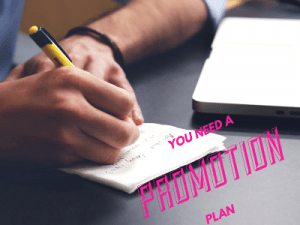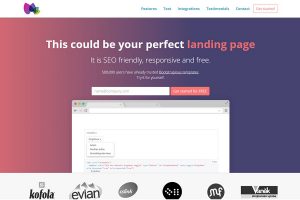 So you want to run a promotion, huh? Maybe an appearance, or an ad. Maybe you want to put on a mini-tradeshow, or hire a band to play outside your store.
So you want to run a promotion, huh? Maybe an appearance, or an ad. Maybe you want to put on a mini-tradeshow, or hire a band to play outside your store.
Before you just hand off a credit card or write a check to make things happen, there are a number of things you should do before you let anyone else know that you want something to go down.
Objective:
What is your objective? What is it that you want to have happen once the promotion or event actually happens? Maybe you want to increase your email list by 547 names. Or maybe you want to attract 1,322 new people into your store. I know – you’re trying to increase same-store purchasing volume by 5.3% this March as opposed to last March.
What’s with the weird numbers? No, I’m not trying to be funny – or a jerk. You need to be very specific about your objective. You need to quantify it so that you can measure the results. You should move away from thinking about adding “a lot” of new customers, or “a few more” sales this month. “Several thousand dollars more” has no real way to be measured – how many exactly is “several?”
Cost:
What will it cost you to run this promotion or ad? I didn’t say “price” – that’s the dollars you’ll shell out to get things rolling. I said cost. Will you need to move employees from one task to another? Receiving attention always gets people to ask questions. Is your customer service staff ready to field questions specific to the promotion? Will you need to keep people working longer, so they can pack more boxes, so that you can send out three shipments per day? Will you need to be away from home longer, and miss your kids’ little league game and dance recital? All of these are costs, and you need to know that they exist, and you’re gonna have to pay them.
Plan:
What, exactly, is your plan for this promotion? You do have one, right? What is the promotion is going to entail, who is responsible for what? What steps need to be carried out, and by whom? What needs to be where, and when? What are the dates & times for each milestone? What does the cleanup procedure look like? Do you even need a cleanup procedure? All of this, and more, should be covered by your plan.
Statistics:
During the time that your promotional event is going on, what are you measuring? How are you measuring? Who or what is doing the measuring? Where and how are you recording the results? Who’s responsible for making sure all the data is being recorded? Can they fix it when – and not if – things screw up?
Results:
Data is all the information you’ve collected. Statistics is how data set #2 – all the info you’ve just generated – compares to data set #1 – all the info you already had. Now it’s up to you – and maybe someone else – to look at the data, look at the stats generated, and decide the results. Well, I suppose the results are what they are. What I mean is, you’re going to be deciding if the results are good, bad, or indifferent. Maybe you measured something that isn’t worth measuring. Maybe you forgot to measure something that’s very important. Whether your results are “good” or “bad” is subjective. How did the results measure up to the goals you wanted to hit?
Rinse & Repeat:
So, once you run your ad or event, you’ll need to decide – first of all – if you’re going to repeat this promotion. If so, when? If not, what will you do instead, and when? If you keep this event, what will you do differently? Who will you have covering all the important action points during the event? Who will be responsible for what during the next go-’round?
I know this sounds like an awful lot of questions. It’s not that bad, really. Just taking 10 minutes to sit down and write out a simple plan will cover most of them, and put you a lot farther ahead than most folks. I’m going to let you in on a secret – most people who run a promotion for their business, or a specific product or service, do it by the seat of their pants.
Today’s action item, which will put you ahead of at least 75% of the competition, is to build a one-page plan for your next promotional event or advertisement. To get ahead of 99% of the competition, you have to actually use that plan!

